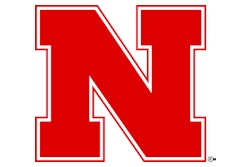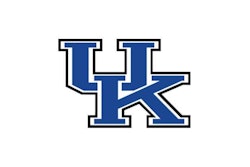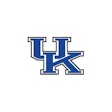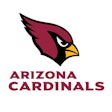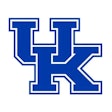Copyright 2014 Gannett Company, Inc.
All Rights Reserved
Michael Beasley wonders where his statistics might stack up if he had remained at Kansas State longer than his freshman year, when he averaged 26.2 points and 12.4 rebounds.
But Beasley did what everyone anticipates Kansas' Andrew Wiggins and Joel Embiid, Duke's Jabari Parker and Kentucky's Julius Randle will do after this season -- go pro after one year in college.
Now with the Miami Heat, Beasley's second stop in a six-year career with the team that took him No. 2 overall in the 2008 NBA draft, he has already been cut once, been traded twice and played for three teams. He also has been arrested on suspicion of marijuana possession. And he's 25.
Asked if he had advice for the four freshmen -- and perhaps four other freshmen who could be lottery picks in June -- Beasley gets to the heart of the dilemma for these talented teens.
"If I could tell them one thing, it would be, 'It's your life; it's what you make it,'" Beasley told USA TODAY Sports. "I think my only regret, and not just with college, is trying to make other people happy all of the time. If I could do everything over, I'd do it for me.
"I can't say I would have stayed another year. I grew up poor, dirt poor. ... Everybody is different. Me? If I came from a better financial situation, I could have been there two, three or four years."
The one-and-done rule has been a hot topic in college basketball since it was implemented by the NBA in 2006 but arguably never more so than this season with potentially a record number of freshmen in position to bolt.
While players see the rule as an opportunity to fulfill their dreams, make millions of dollars and support their families, college basketball coaches say it has profoundly affected the game.
"It tarnishes what we're trying to do as coaches; it tarnishes the idea that kids are here to get an education," Colorado coach Tad Boyle says. "It just does. People know it. That's why there are so many people it upsets and people don't like it. I don't know of any person I've ever talked to who says, 'I like the one-and-done.'"
The NBA's collective bargaining agreement runs through the 2021 draft, but there is an opt-out in 2017 for either side, the owners or the players.
Commissioner Adam Silver told USA TODAY Sports last week that he favored raising the minimum age from 19 to 20. Players have long held the opposite view, wanting to revert to the pre-2006 rules allowing players to declare for the draft at 18.
"Even if (the rule is) not terrible for the NBA right now," Silver says, "at least talking to a lot of my college coaching friends and college (athletics director) friends, their view is (that) one-and-done is a disaster."
Since 2006, 57 players who were one year out of high school have been drafted by NBA teams. There have been stars such as Kyrie Irving, Kevin Durant and Derrick Rose and those who have struggled to stick in the league, including Tiny Gallon and Josh Selby.
"It was a decision to take care of my family," says Gallon, who played at Oklahoma and was selected 47th overall by the Milwaukee Buck in 2010. "I was at Oklahoma for the money. I had to take care of my family. I felt I was ready, so I came out."
Now suiting up for the NBA Development League's (Newark) Delaware 87ers, Gallon, 23, insists he wouldn't change a thing.
"It hasn't turned out how I thought it would, but that's the whole process," he says. "When I made my decision, I was comfortable with it."
Obsession with freshmen
Kobe Bryant, who went pro out of high school in 1996, says he doesn't think the college game is preparing players for the NBA.
"That's always been the big argument. As a player you have to go to college, you have to develop your skills and so forth and so on, and then you come to the league," Bryant told reporters last month. "I think the reality is there's been a lot of players who've come out of high school that were much more successful on average than players that went to college for a year or two years."
Duke coach Mike Krzyzewski has spoken out against the one-and-done rule over the years, but even he has recruited those players. He has Parker this season and two expected one-and-done players, Jahlil Okafor and Tyus Jones, coming in next fall.
However, he joins other coaches in lamenting how one-and-done has affected college basketball's marketing and promotion. Turn on ESPN or any other channel broadcasting games this season, and you'll see analysts debating which freshmen have been most valuable to their team or their draft stock. You'll hardly see any discussion of upperclassmen.
"We're obsessed with this, young players becoming superstars overnight," Michigan coach John Beilein says. "It's unfair, and the expectations are unfair. They're 19 years old, 18 years old. Let them grow before we put these huge expectations on them."
That results in pressure -- both external and internal -- to get to the NBA in one season.
"It's taking the players who return for their second and third years to a level of insanity, where you become a failure if you at all enter your fourth year in college," Arizona coach Sean Miller says. "You can't play. You're a bum. You did not make it. If you just think about that, where that starts from is players being here for just one year. 'OK, I'll come here a second year, but I'll be damned if I ever get to my third.'"
Calls for change
Many coaches have espoused the benefits of a rule similar to that in baseball, where players could get drafted out of high school but if they choose to go to a four-year college they must stay at least three years.
Krzyzewski, Florida coach Billy Donovan and Michigan State coach Tom Izzo point out there are no rules holding a tennis player back from going pro at a young age. This argument gets made any time an elite college player gets injured and costs himself millions of dollars.
But the realists in college know allowing 18-year-olds to go straight to the pros is not likely to happen. The NBA doesn't want its scouts in high school gyms, Krzyzewski says.
"The NBA will not take kids out of high school; that's a no-go," Syracuse coach Jim Boeheim says. "It's just not a solvable problem."
Even so, the two-year minimum is gaining support, at least publicly. It would give college programs more stability, provide players with time to develop and give NBA teams better prospects.
Miller says he thinks a two-year rule would help everybody. Silver agrees, saying, "We believe the additional year of maturity would be meaningful."
Still, it's hard to predict change. The NCAA desires discussion of the issue, President Mark Emmert said late in 2013. But he pointed out it is controlled by the NBA and the players association.
"It takes two parties, neither of which is us," Emmert said. "I think we need a bigger, broader conversation about what should the relationship between college sport and professional sport be. Some people, me included, said I don't have any (problem) with people going to professional athletics and not coming to college."
If whoever replaces Billy Hunter as the leader of the players association prioritizes addressing the one-and-done issue, talks regarding change could at least take place. But Krzyzewski says he doesn't know if one-and-done will go away.
"It's one of those issues (where) it needs to be collectively bargained, and for good reason," Silver says. "This is one of these issues that the larger basketball community needs to come together and address, not just the NBA owners and our players. Youth basketball and college basketball should have a seat at the table as well."
Contributing: Sam Amick
Terms and Conditions Privacy Policy














